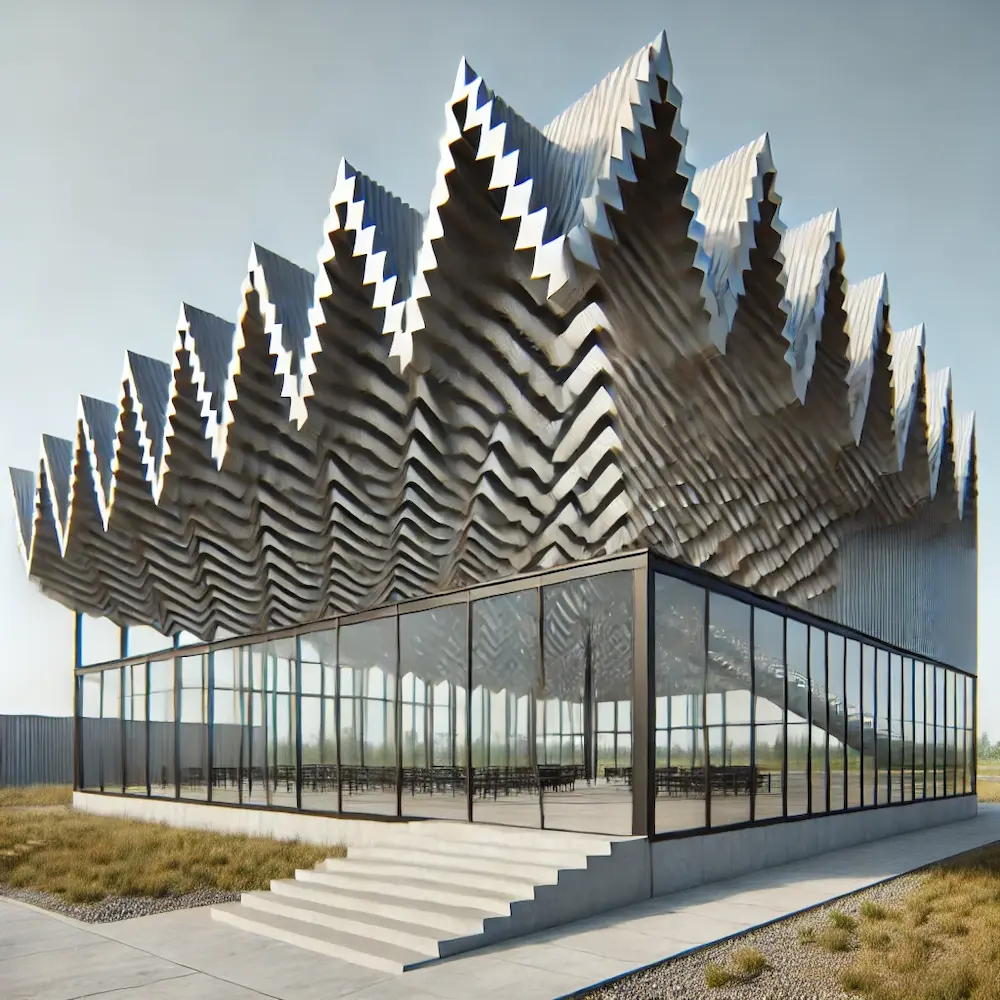A sawtooth roof comprises a series of ridges with dual pitches on either side, resembling the teeth of a saw. The steeper, glazed surfaces typically face away from the equator, allowing diffused natural light to enter while minimizing direct sunlight and glare. This design is particularly effective for illuminating large interior spaces uniformly.
History and Origins of Sawtooth Roofs
The sawtooth roof design dates back to the mid-19th century, with British engineer and architect William Fairbairn credited for its development around 1827. Initially adopted during the Industrial Revolution, this roofing style became prevalent in factories and manufacturing buildings, where ample natural light was essential for operations. The design experienced a decline with the advent of artificial lighting but saw a resurgence in the late 20th and early 21st centuries due to renewed interest in energy efficiency and natural lighting.
Key Features of Sawtooth Roofs
- Series of Dual-Pitched Roofs: The alternating vertical and sloped surfaces create a serrated profile, optimizing natural light intake.
- Glazed Steeper Surfaces: The vertical or near-vertical faces are often fitted with glass panels to admit diffused daylight.
- Orientation: Positioned to face away from the equator, the design reduces heat gain and glare from direct sunlight.
- Enhanced Ventilation: The structure facilitates improved airflow within the building.
Applications of Sawtooth Roofs
Sawtooth roofs have been utilized in various building types, including:
- Industrial and Manufacturing Buildings: Historically used to provide natural lighting in factories during the Industrial Revolution.
- Art Studios and Workshops: The uniform natural light is ideal for activities requiring consistent illumination.
- Modern Residential Architecture: Incorporated into contemporary home designs for their aesthetic appeal and energy efficiency.
- Educational and Commercial Buildings: Employed to enhance natural lighting and reduce reliance on artificial light sources.
Considerations When Choosing Sawtooth Roofs
- Construction Complexity: The design requires precise construction techniques, potentially increasing building costs.
- Maintenance: Regular upkeep is necessary, especially for the glazed surfaces, to ensure optimal light transmission and prevent leaks.
- Energy Efficiency: While they reduce the need for artificial lighting, considerations regarding insulation and thermal performance are essential to prevent heat loss or gain.
- Aesthetic Integration: The distinctive appearance may not suit all architectural styles and should be considered in the overall design context.
Conclusion
Sawtooth roofs offer a blend of historical significance and practical benefits, providing ample natural light and contributing to energy efficiency. Their unique design continues to inspire architects in various applications, from industrial buildings to modern residential homes. However, careful consideration of construction, maintenance, and integration with the overall architectural design is crucial to fully leverage the advantages of sawtooth roofs.
